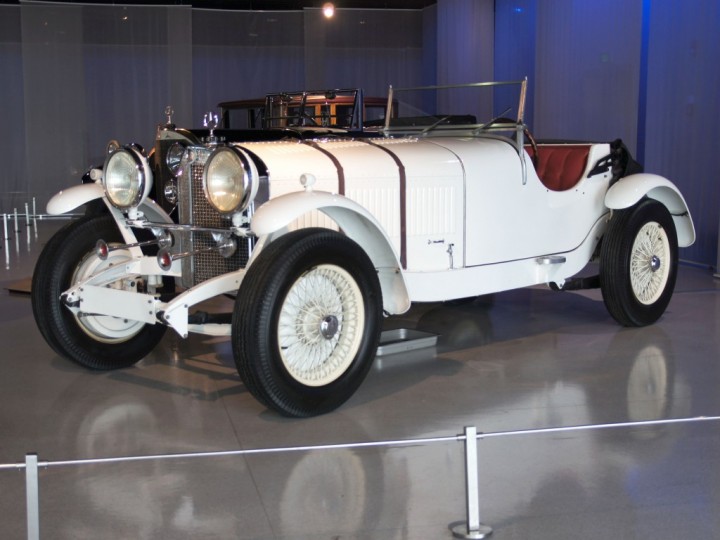1928 Mercedes-Benz SSK
ru.wikipedia.org
The Mercedes-Benz SSK is a roadster built by German automobile manufacturer Mercedes-Benz between 1928 and 1932. Its name is an abbreviation of Super Sport Kurz, German for "Super Sport Short", as it was a short wheelbase development of the earlier Mercedes-Benz S. The SSK's extreme performance and numerous competitive successes made it one of the most highly regarded sports cars of its era.
The SSK was the last car designed for Mercedes-Benz by the engineer Ferdinand Porsche before he left to found his own company. The SSK was based on the earlier Mercedes-Benz S, but with the chassis shortened by 19 inches (480 mm) to make the car lighter and more agile for racing, especially short races and hillclimbs.
Fitted with a supercharged single overhead camshaft 7-litre straight-6 engine producing 200–300 metric horsepower (150–220 kW) and over 500 lb•ft (680 N•m) of torque (depending on the state of tune), the SSK had a top speed of up to 120 miles per hour (190 km/h), making it the fastest car of its day.[8] The supercharger on the SSK's engine was operated by a clutch that was engaged by fully depressing the throttle pedal and then giving the pedal an extra push. Backing off the throttle pedal disengaged the supercharger clutch.
The SSK was driven to victory in numerous races, including in 1929 the 500 Miles of Argentina, the 1929 and 1930 Cordoba Grands Prix, the 1931 Argentine Grand Prix, and, in the hands of legendary Grand Prix racing driver Rudolf Caracciola, the 1929 British Tourist Trophy race, the 1930 Irish Grand Prix, the 1931 German Grand Prix, and the 1931 Mille Miglia.
Manufacturer: Mercedes-Benz
Production:1928–1932
Assembly :Bremen, Germany
Designer : Ferdinand Porsche
Body and chassis
Class : Sports car
Body style: 2-door roadster
Layout : FMR layout
Powertrain
Engine: supercharged 7,069 cc (7.1 L) SOHC I6
Dimensions
Wheelbase : 116 in (2,950 mm)
Length : 167 in (4,240 mm)
Width: 67 in (1,700 mm)
Height: 68 in (1,730 mm)
Curb weight : 3,750 lb (1,700 kg)







